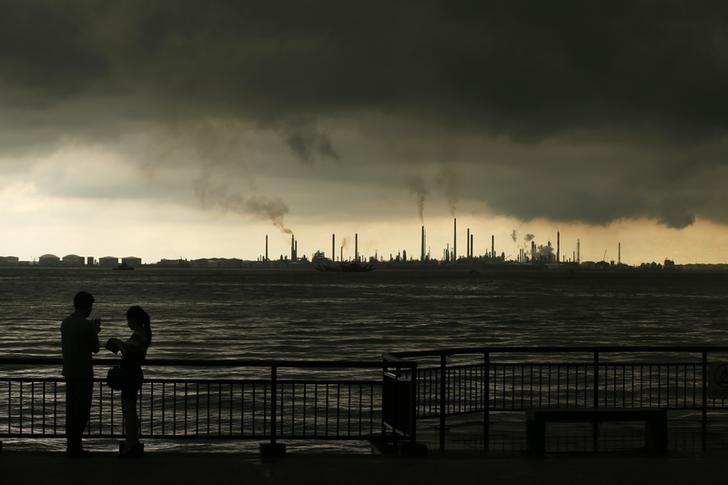Gold prices just lower; monthly gains on track
* Oil demand set to shrink by 90,000 bpd in 2020
* Coronavirus wipes out 2.5 mln bpd Q1 oil demand
* IEA cuts 2020 demand forecasts by nearly 1 mln bpd
* Demand set to rebound strongly in 2021, IEA says
* Between 2019 and 2025, demand set to rise by 5.7 mln bpd
(Adds first-quarter year-on-year demand fall)
By Ron Bousso
LONDON, March 9 (Reuters) - Global oil demand is set to
contract in 2020 for the first time in more than a decade as
global economic activity stalls due to the coronavirus, the
International Energy Agency said on Monday.
The downward revision came as oil prices LCOc1 dropped as
much as third in their biggest one-day fall since the 1991 Gulf
War after Saudi Arabia launched a bid for market share following
the collapse of an output pact with Russia. O/R
The energy watchdog said it expected oil demand to be 99.9
million barrels per day (bpd) in 2020, lowering its annual
forecast by almost 1 million bpd and signalling a contraction of
90,000 bpd, the first time demand will have fallen since 2009.
Global oil demand fell 2.5 million bpd on the year in the
first quarter, or around 2.5%, the IEA estimated in its report,
as coronavirus cut travel and economic activity. Around 1.8
million bpd of that was in China.
The Paris-based IEA said in its medium-term outlook report
that in an extreme scenario where governments fail to contain
the spread of the coronavirus, which has affected over 100,000
people consumption could drop by up to 730,000
bpd.
The virus has led to a sharp drop in industrial activity
particularly in China and other Asian economies, as well as
Italy, one of the worst-affected places outside China. The virus
has led to a slowdown in demand for ground and air transport.
IEA Executive Director Fatih Birol urged producers to
"behave responsibly" in the face of the coronavirus crisis,
after a deal on output restraint between OPEC, Russia and other
producers collapsed last week, sending oil prices plunging.
"At such a time of uncertainty and potential vulnerability
to the world economy ... playing Russian roulette with the oil
markets may well have grave consequences," Birol told reporters.
Saudi Arabia, OPEC's biggest producer, signalled it would
pump more, sending oil prices down to levels that will place a
strain on its budget and those of other oil producers, and put a
severe squeeze on producers of more costly U.S. shale oil.
Birol said the low oil prices could put many major crude
producing nations such as Iraq, Angola and Nigeria under "huge"
financial strain and fuel social pressures.
The IEA said that, following a shock to demand in 2020, oil
consumption was likely to bounce back strongly and rise by 2.1
million bpd in 2021.
After that, it said growth was set to decelerate and rise by
only 800,000 bpd by 2025 due to slower growth in demand for
transport fuels as governments implement policies to improve car
engine efficiency and push to cut greenhouse gas emissions.
"The coronavirus crisis is adding to uncertainties the
global oil industry faces as it contemplates new investments and
business strategies," Birol said.
While oil demand is set to gyrate sharply, the IEA kept its
forecast for global oil supplies largely unchanged, with
production capacity set to grow by 5.9 million bpd by 2025,
marginally outpacing demand.
Production growth is set to come mostly from expansion in
the U.S. shale output, as well as from rising output in Brazil,
Guyana and Canada, the IEA said.
Expansion of production in Iraq and the United Arab Emirates
would offset declines in Libya and Venezuela, so that output
from the Organization of the Petroleum Exporting Countries would
rise by 1.2 million bpd by 2025.
<^^^^^^^^^^^^^^^^^^^^^^^^^^^^^^^^^^^^^^^^^^^^^^^^^^^^^^^^^^^
IEA supply 2020 https://tmsnrt.rs/2VYIoJl
IEA demand 2020 https://tmsnrt.rs/38txjTq
^^^^^^^^^^^^^^^^^^^^^^^^^^^^^^^^^^^^^^^^^^^^^^^^^^^^^^^^^^^>
